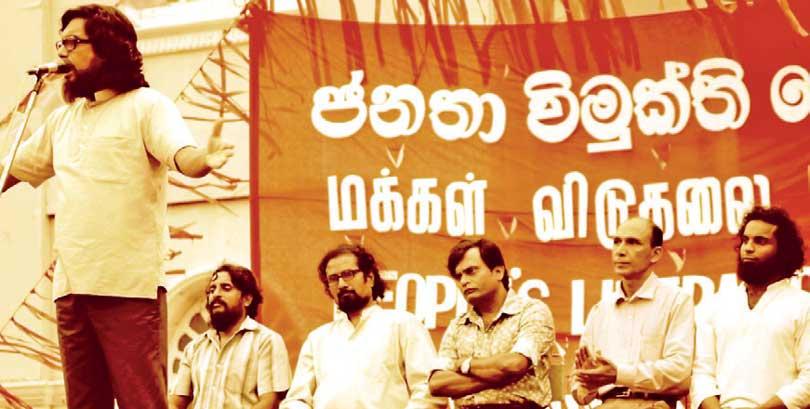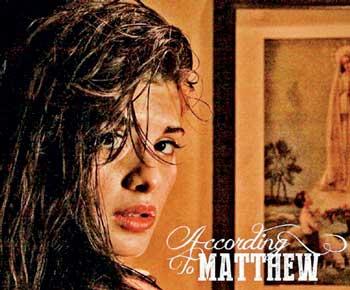26 Mar 2019 - {{hitsCtrl.values.hits}}

 Ginnen Upan Seethala is that rare work: it combines history and fiction so much that we can’t draw a line between the two. Purists and activists from the time in which it is set will no doubt object to its depiction of that history, but even accounting for the omissions and the distortions, there’s no doubt that Anuruddha Jayasinghe’s film has set a precedent. I just wish Jayasinghe didn’t go overboard by (falsely) claiming it as “the first Sinhala film to be nominated for the Best Picture Oscar.”
Ginnen Upan Seethala is that rare work: it combines history and fiction so much that we can’t draw a line between the two. Purists and activists from the time in which it is set will no doubt object to its depiction of that history, but even accounting for the omissions and the distortions, there’s no doubt that Anuruddha Jayasinghe’s film has set a precedent. I just wish Jayasinghe didn’t go overboard by (falsely) claiming it as “the first Sinhala film to be nominated for the Best Picture Oscar.”
Most directors romanticise history so much that we don’t identify with the characters in front of us – we worship them. It doesn’t matter if you get the perfect actor to play the role, it doesn’t matter if in every other department, from the music to the editing, you’ve attained perfection; if the people at the centre of the story are presented as the heroes they were not, the audiences, who are not as dumb as the critics think they are, tend to spot out the slightest mistakes. Jayasinghe is smart: although he romanticises history, he gives us the payoffs. Consequently, we overlook those mistakes.
Those who were not born to the 80s, after watching the film, might come out thinking that Wijeweera was a misunderstood radical hero whose political machinery went out of control and resulted in the carnage that later consumed him. Jayasinghe, a (former?) JVP activist himself, draws a line between the political arm and the military wing of the party, for instance, depicting the Deshapremi Jathika Viyaparaya as an outfit that the JVP couldn’t control. This distinction, sustained throughout the film, is vital to the director’s clean-shaven portrait of the protagonist.
To be sure, the DJV was not independent of the JVP and the JVP did not abstain from participating in the carnage that pitted them against the State. And Wijeweera was not an innocent in the dark either. But the image that Jayasinghe paints of Wijeweera - a revolutionary who loved his family and was committed to his wife and children, an idealist who was averse to breaking revolutionary precepts, a straight talking and yet intelligent man who could speak five languages – is so different that we (who didn’t live through the eighties) end up being entranced by the images. There’s nothing in Ginnen Upan Seethala that can strictly be called “accurate”, but then again there’s very little in filmmaking like this on which we can use that term.
The performances keep the film together. In his depiction of Wijeweera Kamal Addaraarachchi deliberately loses himself. You don’t see, hear, or feel Kamal in the role: not that drawn out accent, not those exaggerated gestures, not that casual strut. The real Wijeweera was (I am told) of a more remarkable build, at odds with Kamal’s thin frame, but that’s possibly the only dissimilarity between the actor and the man. In everything else, Kamal enmesh
es himself in his part; even that frown of his, which in other films he’s been in normally signifies distrust and arrogance, seems to suggest passionate, yet restrained commitment here.
Some of the sequences are haunting, because they’ve been shot well (for a local film); the last scene, of military vehicles driving through the rain at night, leaves quite an impression. But certain sequences could have been shortened, and others, like the meeting between Wijeweera and Felix Dias Bandaranaike, don’t go anywhere. There are also none of those epic visuals you see in local historical works; the cameraman, Dhanushka Gunathilake, ensures that the images don’t transcend the complexity of the characters, so that even the scenes at the estate, while breathtaking, don’t push to a corner the people at the centre of the unfolding drama.
Ginnen Upan Seethala (mercifully) lacks the two most distinct trademarks of the Sinhala biopic (and the Sinhala film in general): the slowed down South Indian soap opera sequences that are supposed to unearth the drama and the conflict in the plot but actually says nothing, and the overblown background music which takes us away from the story. Ariyawansha Dammage, the writer, has kept us transfixed to the plot, and not the ancillary, inessential details. For that reason, the “history” that emerges from the movie convinces us regardless of its authenticity.
It’s a sombre story, and in a way it’s sentimental too. But Jayasinghe does not ask us, “Could it have turned out differently?” Instead he asks us, “Why didn’t it turn out the way he wanted?” It’s a question we could have asked of those radicals who inspired Wijeweera. In his time, a revolutionary was called a “Che Guevarakarayek.” Today we no longer talk about Guevara, even though we tattoo him on our bodies and wear t-shirts sporting his face; today we talk about Wijeweera, and Ginnen Upan Seethala, even if it doesn’t delve into the movement he founded, talks about him well.
Chandran Rutnam’s According to Matthew talks about the titular character too, but in a rather different way. Based on Ravindra Fernando’s excellent account of the murder case, the film, screened on Sunday, March 17 at the National Film Corporation, prods and tests the audience; by the end of the story, we have given up. I believe this is what Chandran intended, which is why even though the antihero/villain emerges as the wrongdoer in the movie, it’s not quite how we expected him to.
The best parts of According to Matthew are those in which Alston Koch forgets that he’s an actor playing the role of a murderous Anglican priest. It’s in the implication, the hint, the suggestion of wrongdoing and criminality that Koch’s rendition comes out convincingly. The archives don’t tells us whether the man was responsible for the death of Fr. Basil Jayewardene, but the film suggests that it may well have been so. Koch is at his vilest here when he thanks the Lord for the position he inherits from Fr. Basil, after the latter’s passing away. His voice is so charmingly putrid it puts us off even before we actually see him talk.
It’s easy to play around with a priest’s motives in a movie like this, and Chandran does it as much as he can. His Fr. Peiris is not just a forever Bible-quoting fanatic, but also an accomplished exorcist. Koch, however, loses the thread in both: he quotes too many passages from the Holy Book (which the real Peiris may have done) and he actually dispels a spirit from a possessed woman (which the real Peiris may have said he did, but didn’t do). The latter scene, almost straight out of Hollywood, comes close to becoming a confrontation between God and Devil; the purpose, in a nutshell, is to entertain. Audiences are obviously getting what they paid for.
 We know why Peiris did what he did: to get the woman he lusted after. What we don’t know, and what Chandran (wisely?) leaves out and blanks, is why Dalrene Ingram conspired with him to get rid of her husband and his wife. The choice of the actress must have had something to do with it, since Jacqueline Fernandez’s very presence precludes preparation or explanation: she does what she does because she falls in line with the Father’s wishes, regardless of her own feelings. Fernandez’s Dalrene is sexy, eloquent, but utterly incapable of autonomy; Chandran attributes the crimes to Peiris, so what the other’s contribution to them was, we are not really told.
We know why Peiris did what he did: to get the woman he lusted after. What we don’t know, and what Chandran (wisely?) leaves out and blanks, is why Dalrene Ingram conspired with him to get rid of her husband and his wife. The choice of the actress must have had something to do with it, since Jacqueline Fernandez’s very presence precludes preparation or explanation: she does what she does because she falls in line with the Father’s wishes, regardless of her own feelings. Fernandez’s Dalrene is sexy, eloquent, but utterly incapable of autonomy; Chandran attributes the crimes to Peiris, so what the other’s contribution to them was, we are not really told.
According to Matthew is not a masterwork, and its best parts grow from Koch’s spontaneity. Whenever he musters up his strength and becomes an Elmer Gantry-like evil preacher, he loses that sense of conviction which he conjures up effortlessly in those scenes for which he and the director don’t prepare us. When Peiris comes up to his sleeping wife and declares that “there is something wrong with you”, we’re jolted; we’re jolted even more when she sees his bleeding hand (“A stigmata,” he explains to her and the doctor, the latter of whom dryly replies, “It needs bandaging”).
The other performances patch up the holes in the story. Unlike A Common Man, where the acting was either stellar (as with Ben Cross, Ben Kingsley, and Fredrick-James Koch), bad (as with that female reporter), or disconcerting (as with Dushyanth Weeraman’s not-so-memorable cameo as a hacker), the characters come alive in here. The diction is more than passable; it’s almost perfect (not only with the Burgher and the foreign players, but even with the local players: Bimsara Premaratne as Eunice Peiris’s wife, and Ryan Wijayaratne as Steven, his cricket-playing protégé).
As for the ending, it’s abrupt and in a way predictable; the final scene, of Dalrene collapsing on the floor into hysterics and of Peiris staring into space, doesn’t quite satisfy. But Chandran probably didn’t intend the film to be a masterwork: it doesn’t play to the gallery and it also doesn’t force audiences to understand the film on the director’s terms; the murder sequences are spelt out for us, going as far as showing us the antagonist syringing the poison in to the insulin. Chandran neither mollycoddles nor confuses us, simply put. “All I want in a good film,” he told me once, “is a good story.” According to Matthew may well be the best story he got so far.
30 Nov 2024 15 minute ago
29 Nov 2024 29 Nov 2024
29 Nov 2024 29 Nov 2024
29 Nov 2024 29 Nov 2024
29 Nov 2024 29 Nov 2024